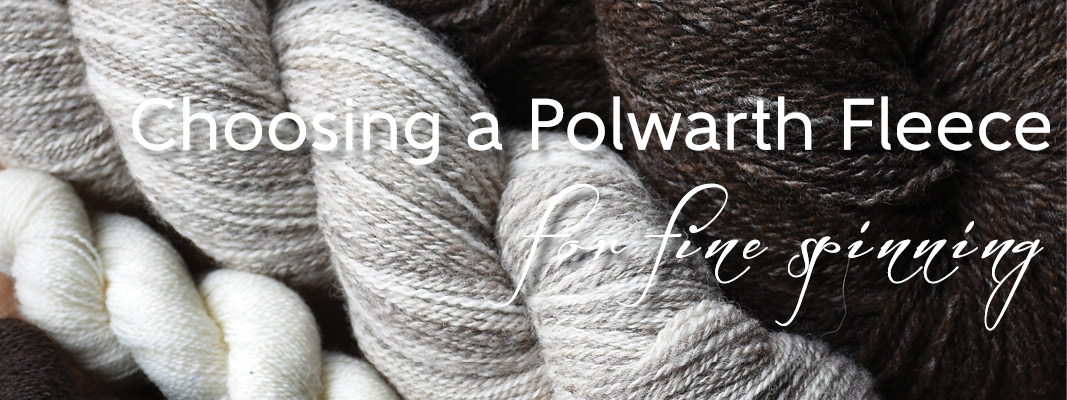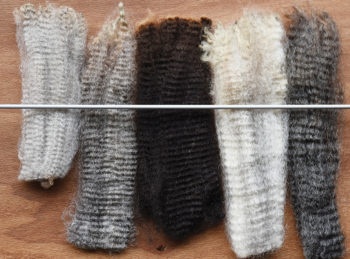
Article: Published with the kind permission of Eleanor Patterson, Starcrest Farm, Oxford, New Zealand ©
As published in Creative Fibre magazine, March 2018
Photos: Kate Mahoney ©
Polwarth is a fine fleece with a micron range of 20–27. It can easily be spun into a fine lace weight yarn and up to sport weight if care is taken in selecting the right fleece.
If you are looking for a fleece for a specific purpose, it is a good idea to purchase from a reputable breeder, as they are likely to know their fleeces and can help you select something suitable for your project. The Black and Coloured Sheep Breeders’ Association of New Zealand is a good place to start, and there is a list of suppliers on their website
You can also ask around at your local spinning group as word of mouth is often the best advertisement for reputable fleece sellers.
A little Polwarth goes a long way so you may not wish to buy a whole fleece: 300 grams spun finely should be enough for a scarf.
Look for a fleece that is free of vegetable matter with a sound staple. You can test for this by holding a staple between the thumb and index finger of each hand and snapping it briskly backwards and forwards – it should make a ‘pinging’ sound. If the fleece has any sort of weakness, it will come apart between your hands. You can also spot a break in the fleece by holding a staple up to the light.
Check the tips of the fleece – this is very important if you are planning to have it machine carded. If the tips break off easily when you pull them with your thumbnail, or if the fleece is from a woolly hogget (the first shear which still has lamb tips), then it is not suitable for machine carding as the end product will contain noils from all the short tips that break off during the carding process.
 Put your hand into the bag of fleece and feel for softness – this is a good indication of how fine the fibre is. Wool judges take handle (softness) into account when estimating micron. Another very good way of estimating fineness is to lie a knitting needle between the crimps, at a right angle to the length of the staple. If a 1.5–2mm needle fits within a single crimp then the fleece should be fine enough to spin a lace weight yarn. If you are looking to spin an even finer thread, such as for the Longest Thread Competition, look for a fleece where the crimp is even tighter, as there is a strong correlation between tightness of crimp and fineness of the fibre.
Put your hand into the bag of fleece and feel for softness – this is a good indication of how fine the fibre is. Wool judges take handle (softness) into account when estimating micron. Another very good way of estimating fineness is to lie a knitting needle between the crimps, at a right angle to the length of the staple. If a 1.5–2mm needle fits within a single crimp then the fleece should be fine enough to spin a lace weight yarn. If you are looking to spin an even finer thread, such as for the Longest Thread Competition, look for a fleece where the crimp is even tighter, as there is a strong correlation between tightness of crimp and fineness of the fibre.
The original Polwarth sheep were bred in Australia by using Lincoln/Merino cross ewes and breeding back to Merino rams. Due to the Merino influence, Polwarth fleece has a waxy characteristic and I recommend washing two or three times in very hot water with some wool scour or detergent prior to spinning. For detailed instructions, refer to an article by Pat Old on the Black and Coloured Sheep Breeders’ Association of New Zealand website. I wash my Polwarth fleece in small quantities and open up the staples with a flick carder before spinning.
